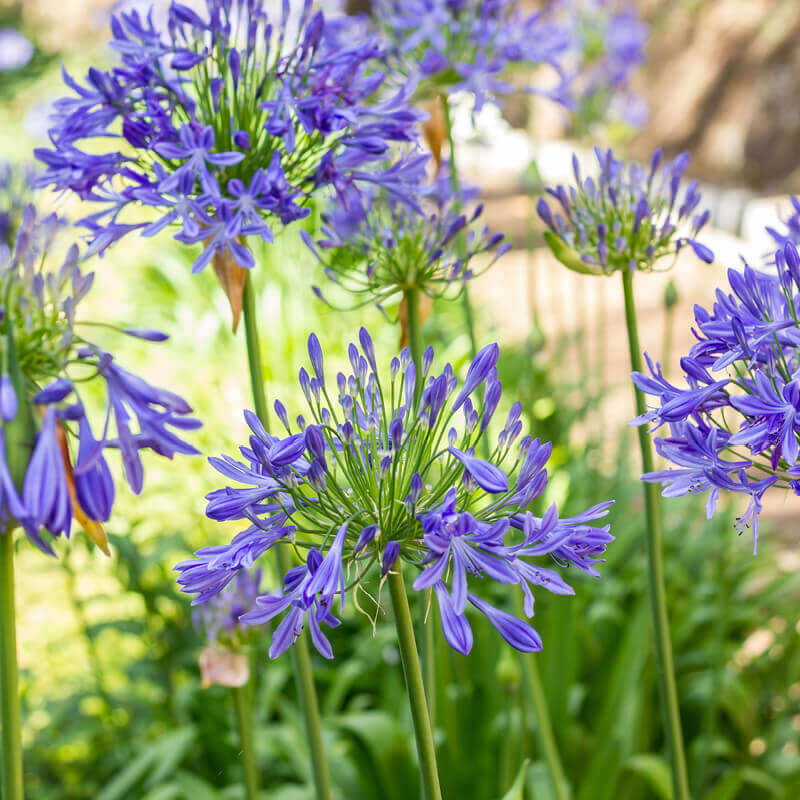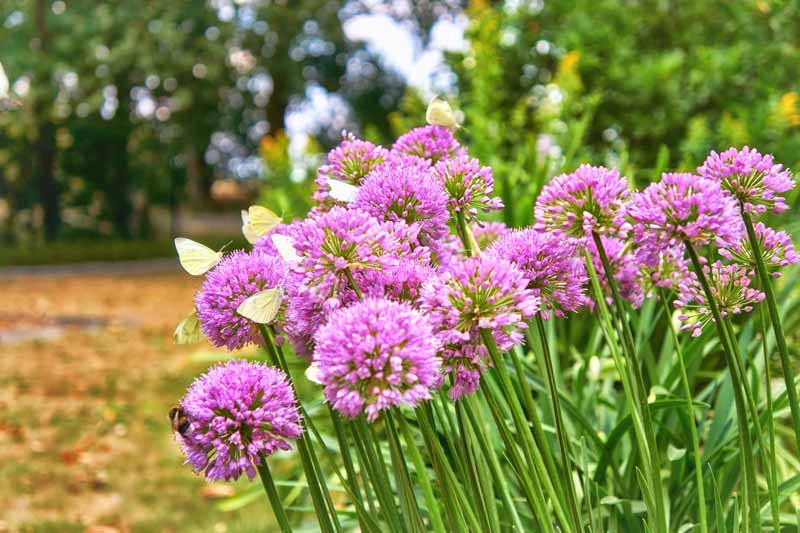Typical Agapanthus Problems and Exactly How to Solve Them
Unleashing the Secret to Effective Agapanthus Farming: Idea for a Flourishing Yard
In the realm of gardening, growing agapanthus effectively requires a calculated strategy that incorporates different facets of plant treatment. By understanding the subtleties of agapanthus farming, one can produce an environment where these plants thrive and grow generously.
Planting Agapanthus: Best Practices
When planting Agapanthus, proper soil preparation is vital for making sure effective development and growth of these attractive flowers. Agapanthus, typically called Lily of the Nile or African lily, flourishes in well-draining dirt with a somewhat acidic to neutral pH degree - Agapanthus. Before planting, it is vital to change hefty clay dirts with organic issue such as garden compost or peat moss to enhance drain and offer vital nutrients for the plants
To grow Agapanthus, choose an area that obtains full sunshine to partial shade, as this will certainly advertise healthy and balanced growth and abundant flowering. Dig a hole two times the size of the plant's origin sphere and put the Agapanthus at the exact same deepness it was formerly growing. Carefully backfill the hole with soil, pushing down strongly to remove any air pockets around the origins.
Water the newly planted Agapanthus thoroughly and remain to keep the soil equally damp, particularly during the plant's active expanding season. Agapanthus. Using a balanced fertilizer once a month can further support the plant's growth and flowering. By adhering to these finest techniques for planting Agapanthus, you can produce a stunning display of these exciting flowers in your yard
Suitable Dirt Conditions for Agapanthus
For ideal development and blooming success of Agapanthus plants, guaranteeing the dirt conditions are excellent is vital. Agapanthus prefers dirt that is rich in nutrients, so incorporating a well balanced plant food throughout the expanding period can promote healthy and balanced development and vibrant flowers.

Watering and Fertilizing Tips
To make certain healthy development and lively blossoms, appropriate watering and feeding strategies are crucial for effective Agapanthus farming. Agapanthus plants benefit from normal watering, especially throughout the expanding season.
When it involves feeding Agapanthus, a well balanced plant food with equal components nitrogen, phosphorus, and potassium can be applied in the springtime to advertise healthy and balanced development and flowering. Slow-release plant foods are ideal for providing nutrients slowly over an extended period. Avoid over-fertilizing, as this can lead to too much foliage development at the cost of blooms.
Furthermore, integrating organic issue like garden compost into the soil can improve nutrient degrees and enhance soil structure, helping in the general wellness of the Agapanthus plants. By following these watering and feeding ideas, garden enthusiasts can guarantee their Agapanthus plants flourish and create magnificent display screens of blossoms.
Pruning and Deadheading Methods
Proper trimming and deadheading methods play an essential function in keeping the wellness and appearances of Agapanthus plants, complementing the important methods of watering and fertilizing for successful farming. Pruning Agapanthus entails removing spent flower heads, dead or yellowing leaves, and general shaping of the plant to advertise far better development. Deadheading, the process of eliminating discolored flowers, not just improves the plant's appearance but additionally encourages more blooming.
When deadheading Agapanthus, it is suggested to clip off the flower stem at the base utilizing sharp, tidy shears. This procedure reroutes the plant's power from seed manufacturing back right into root and vegetation growth, promoting a healthier and extra durable plant. Regular deadheading can prolong the blooming duration of Agapanthus and explanation avoid self-seeding, which can cause congestion.
In terms of trimming, Agapanthus normally benefits from a light trim after blooming to clean up the plant and encourage fresh development. Cutting down the invested flower stems and eliminating any dead or broken vegetation aids maintain the plant's vigor and overall appearance. Nonetheless, it is necessary to stay clear of reducing right into the crown of the plant, as this can weaken its wellness.

Protecting Agapanthus From Vermins and Diseases
Applying efficient pest and illness administration approaches is vital to securing the health and vigor of Agapanthus plants in growing. Agapanthus are generally sturdy plants, but they can still fall target to different pests and diseases otherwise properly looked after. One typical pest that influences Agapanthus is the Agapanthus borer, a caterpillar that tunnels into the plant, creating damages to the blossoms and fallen leaves. To prevent problems, regular examination of the plants is essential. If borers are detected, they can be manually gotten rid of, or insecticidal soap can be made use of as a control procedure.
In addition to insects, Agapanthus are at risk to conditions such as root rot and fungal leaf spots. By remaining attentive and attending to parasite and condition problems promptly, garden enthusiasts can aid their Agapanthus prosper and thrive.

Verdict
Finally, successful cultivation of agapanthus calls for proper planting methods, perfect dirt conditions, ample watering and feeding, routine trimming and deadheading, and security from bugs and more helpful hints illness. By following these tricks and tips, garden enthusiasts can make sure a prospering garden loaded with gorgeous agapanthus blooms. Agapanthus. Remember to maintain constant care and attention to detail to advertise the wellness and longevity of these stunning plants
When planting Agapanthus, correct dirt preparation is important for guaranteeing effective development and development of these gorgeous flowers.Water the freshly planted Agapanthus thoroughly and continue to keep the dirt uniformly moist, particularly during the plant's active growing period.For ideal development and blooming success of Agapanthus plants, ensuring the dirt conditions are perfect is crucial. When growing or hair transplanting Agapanthus, guarantee the dirt is well-prepared to offer the necessary foundation for the plants to develop themselves effectively. One typical pest that affects Agapanthus is the Agapanthus borer, Learn More a caterpillar that passages right into the plant, creating damage to the fallen leaves and blossoms.